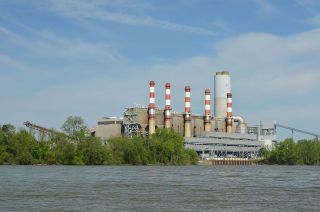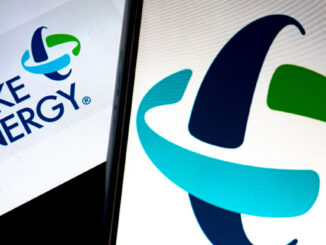
Before the year is up, North Carolina regulators will issue their blueprint for how Duke Energy should zero out its carbon emissions by 2050, a requirement of a bipartisan state law that passed last fall.
As we await the final Carbon Plan, the Energy News Network is diving into some of its most fiercely contested elements. Last week, we examined advocates’ belief that Duke needs to go all-in on solar and the utility’s proposal for a new generation of natural gas plants.
Today, we explore energy efficiency. By shaving off the total number of electrons it must sell and flattening peaks in demand, Duke can avoid building new sources of energy and cut its carbon emissions. But stakeholders in the Carbon Plan proceeding have competing views on how high the utility should aim.
Duke believes trimming its predicted retail sales down 1% — about average for large utilities in the country — is an “aggressive but achievable target.” Many others say the climate crisis and the imperative to save ratepayers money requires more ambition.
During a September hearing, the latter camp seemed to have at least one ally on the seven-member commission that will make the final call.
“I don’t want to see us at the average,” Commissioner Floyd McKissick, a former state senator from Durham, told Duke. “I want to see us in the top 25%. I wouldn’t mind if we were right there in the top 10%.”
Sign up for Energy News Weekly
Get the most important energy news of the week delivered directly to your inbox.
‘In the middle of the pack’
There’s an adage in energy policy circles: The cheapest electron is the one not used. That’s especially relevant for the Carbon Plan, which by law must chart the least-cost path to net-zero emissions.
Utility energy efficiency programs aren’t free, of course. Helping customers switch to more efficient appliances, for example, might involve spending on advertising, administration, and cash rebates. Yet even after accounting for such costs, energy efficiency often comes in lower than most, if not all, other sources of power.
A report last year from the American Council for an Energy Efficiency Economy found that utility energy efficiency programs cost between 1.2 and 4.9 cents per kilowatt-hour, with an average of 2.4 cents. By comparison, combined-cycle gas plants ranged from 4.4 to 7.3 cents per kilowatt-hour, according to investment firm Lazard.
Yet Duke historically has taken little advantage of energy efficiency, in part because it hasn’t served the interests of its shareholders, who earn a return on large capital assets through rates.
Though the company excels in energy efficiency relative to the rest of the southeast, according to a February 2022 report from the Southern Alliance for Clean Energy, the company’s savings as a percent of total retail sales hovered around the national average, which in 2020 was about 0.72%.
A report on the nation’s 52 largest investor-owned utilities also rates Duke’s two arms in North Carolina as middling. “Duke Energy Carolinas has been in the middle of the pack in terms of overall savings,” said Weston Berg, senior researcher at the American Council for an Energy-Efficient Economy, while Duke Energy Progress has ranked lower. “The savings they cited were just under 1%. About half the utilities we looked at are doing better than that.”
Because some large customers can opt out of Duke’s energy efficiency programs, the company hones on a different benchmark for its Carbon Plan: the percentage of “eligible” sales it can cut through its efforts.
Duke’s data show Duke Energy Carolinas has exceeded 1% of eligible sales in five of the last seven years, while Duke Energy Progress has hovered around 0.9%. In four different proposed pathways to zero out its carbon emissions by 2050, Duke proposes to meet the 1% benchmark each year.
Though critics call this a “business as usual” approach, Duke spokesperson Bill Norton says it is a “starting point, not a finish line.”
Maintaining the same levels of efficiency year after year is also difficult, the company says. For example, some historic gains in efficiency have come from the transition to more efficient lighting, but as ultra-efficient LEDs become standard, those returns begin to diminish. “In other words, that light bulb has already been changed,” Norton said by email. “You can’t change it again and double-count it. You have to find new opportunities for savings.”
During the September expert witness hearing, Duke also asserted that North Carolina customers have less incentive to participate in efficiency programs than those in other parts of the country because their rates are relatively low.
‘Finding ways to make it work’
Yet Berg says the cost of electricity isn’t the only factor in the success of efficiency programs. “There are other utilities in the country with rates comparable to those in North Carolina,” he said. “We’re seeing utilities in those states finding ways to make it work.”
That’s part of why a coalition of environmental advocates and clean energy industry groups say the company can do better. They want commissioners to order Duke to ramp up efficiency to 1.5% of eligible sales by 2027 and to 1.5% of all sales by 2030.
According to modeling from Synapse Energy Economics, the higher efficiency targets — combined with a more aggressive build-out of solar and batteries rather than natural gas and other factors — could save ratepayers $18 billion or more in net present value over the next three decades.
Similarly, modeling by Gabel Associates on behalf of a coalition of big tech companies showed that if Duke shaved off 7.7% of its sales by 2030, it could curb its carbon emissions and ensure reliability at a lower cost to ratepayers than meeting the lower targets the utility proposed.
Tyler Fitch, senior associate at Synapse, said he was confident in the 1.5% target because Duke had already demonstrated it can meet 1%. “Starting with that as a baseline — instead of as an ambitious target to ramp up to — makes sense,” he said.
Duke’s own study showed that cost-effective energy-efficiency savings could reach up to 13%, a June 2020 estimate that many observers believe is conservative. The utility could do more to market its programs, they say, which will become more attractive as fossil fuel prices increase. Residential customers’ heavy use of air conditioning means building envelope improvements could yield big savings. And the prevalence of electric resistance heat means the switch to heat pumps would bring even more gains in efficiency.
“There’s more room for improvement here,” Fitch said, “and more room for keeping money in ratepayers’ wallets.”
What’s more, the same law that required the carbon plan also allowed performance-based ratemaking, decoupling electricity sales from the utility profit motive. And the Inflation Reduction Act will bring additional incentives for energy efficiency. Both policy moves, Fitch said, are “potential game-changers.”
While a half a percentage point of difference may seem minor, the stakes are high for ratepayers, especially low-income ones who could benefit most from lower electric bills. It could also mean the difference between building new gas power plants or not.
“If Duke is underestimating and undervaluing energy efficiency in the Carbon Plan,” said Rory McIlmoil, senior energy analyst with Appalachian Voices, “that results in billions of capacity costs that could have been avoided.”
Because the 2021 law requires the plan to be refreshed every two years, there’s also time to tack in 2024 and thereafter, advocates point out. And it’s easier to establish new energy efficiency programs or tweak them to make them more effective than to pull back construction on a new power plant.
But Public Staff, the state-sanctioned customer advocate, takes the converse view. Better to be conservative now and plan for future generation needs, they say, than to miss efficiency targets and be forced to buy expensive imported power, for instance.
They point to Duke’s 2020 study — which concludes that 0.78% of eligible sales for Duke Energy Carolinas and 0.87% for Duke Energy Progress are reasonable estimates for a 25-year time frame — to support their argument that a 1% of eligible sales target is too aggressive.
“We’re not saying that it’s not possible that it could be a greater amount,” said James McLawhorn, head of the energy division. “We’re just saying no evidence has been presented to us at this point in time to justify it.”
Questions or comments about this article? Contact us at editor@energynews.us.



